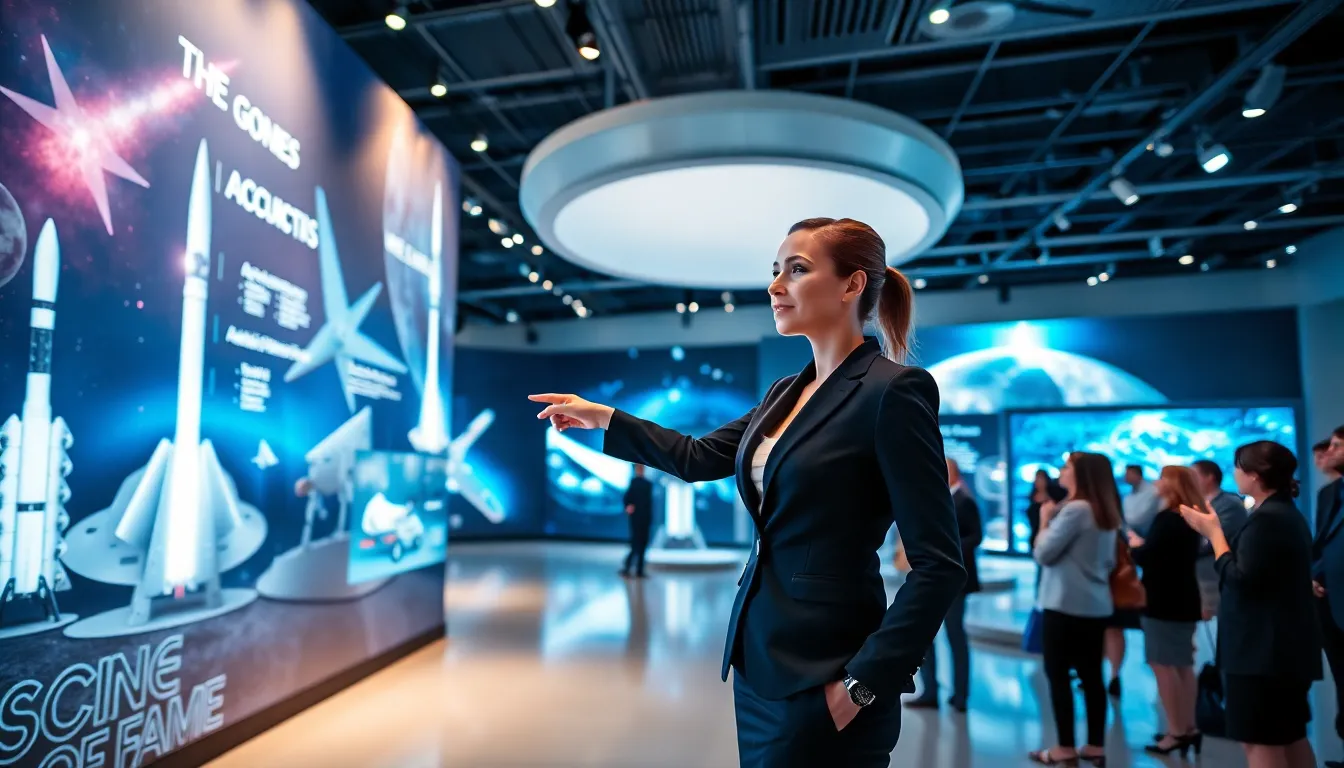Imagine hurtling through the cosmos at breakneck speeds, only to face the fiery embrace of Earth’s atmosphere. Sounds dramatic, right? Welcome to the world of orbital reentry simulations, where engineers and scientists play a high-stakes game of physics and thermodynamics. These simulations are crucial for ensuring that spacecraft make a safe return, avoiding a fiery fate that would make even the bravest astronaut cringe.
Table of Contents
ToggleOverview of Orbital Reentry Simulations
Orbital reentry simulations model the intricate processes involved when a spacecraft returns to Earth. Engineers and scientists utilize these simulations to analyze various scenarios that might occur during descent. Data generated by these simulations informs design improvements, ensuring that spacecraft can withstand extreme conditions.
High-speed reentry generates significant heat due to atmospheric friction. Computational fluid dynamics plays a vital role in predicting temperature distribution across the spacecraft’s surface, helping to prevent structural failure. Various materials are tested in simulations to determine their thermal resistance and suitability for reentry vehicles.
Simulations also examine the forces acting on a spacecraft during reentry. Atmospheric pressure changes rapidly, impacting the vehicle’s trajectory and stability. Understanding these forces allows engineers to design more robust guidance and control systems.
Engineers simulate multiple variables, including angles of attack and reentry speeds. Each variable affects the thermal profile and aerodynamics of the spacecraft. By adjusting these factors, they can identify optimal reentry profiles that minimize risks to astronauts and equipment.
Lastly, some simulations incorporate real-time data from existing flights to refine their accuracy. The integration of historical data enhances predictive capabilities, ensuring that new designs consider all potential challenges. Realistic simulations contribute significantly to the safety and success of manned and unmanned space missions.
Importance of Orbital Reentry Simulations
Orbital reentry simulations hold significant value in aerospace engineering. They play a crucial role in ensuring the safe return of spacecraft to Earth.
Safety Considerations
Safety underpins the necessity of orbital reentry simulations. These simulations model extreme conditions that a spacecraft encounters during atmospheric reentry. Engineers assess heat distribution and structural integrity to avoid failure. They also analyze forces stemming from rapid pressure changes that could destabilize a craft. By simulating various angles of attack and reentry speeds, teams enhance safety protocols. Accurate predictions allow engineers to design better thermal protection systems, which shield astronauts from harmful temperatures. As a result, simulations contribute to a safer flight experience.
Mission Success
Mission success relies heavily on thorough reentry simulations. Various reentry profiles emerge from examining multiple scenarios, maximizing the chances of a smooth return. Engineers utilize the data from simulations to refine trajectory planning, ensuring spacecraft land accurately. Simulations also help minimize the risks of anomalies during descent, critical for both manned and unmanned missions. Optimizing reentry paths ultimately leads to successful missions, demonstrating the interconnectedness of simulations and overall mission effectiveness. Accurate predictions and design improvements drive advancements in aerospace technology, reinforcing the importance of these simulations for future space explorations.
Key Components of Orbital Reentry Simulations
Orbital reentry simulations consist of several crucial components that ensure spacecraft safely return to Earth. Understanding these elements enhances the efficacy of the simulations.
Physics and Dynamics
Physics and dynamics underpin the entire simulation process. Aerodynamics influences how a spacecraft behaves during reentry. Changes in air density and pressure create challenges that must be addressed. Engineers model heat transfer mechanisms, predicting temperature distribution on the spacecraft’s surface. It’s essential to know how different materials respond under intense heat conditions. Accurate physics modeling contributes to redesigning thermal protection systems that prevent structural failure during descent. Managing forces acting on the spacecraft requires understanding the balance between inertia and drag. These principles drive the identification of optimal reentry angles and trajectories, leading to safer missions.
Software Tools and Models
Software tools and models play an integral role in conducting effective simulations. Engineers utilize advanced computational fluid dynamics software to analyze airflow around the spacecraft. Simulating various scenarios aids in assessing performance under differing atmospheric conditions. Some models incorporate real-time flight data to enhance credibility and accuracy. A variety of simulation frameworks allows for adjustments in parameters, accommodating unexpected changes. Reliability in these tools promotes confidence in the simulation results. Maintaining an iterative process ensures continuous refinement of models, driving advancements in technology. Ultimately, enhanced software tools provide critical insights that inform spacecraft design and improve safety measures.
Current Trends in Orbital Reentry Simulations
Innovations in orbital reentry simulations continue to evolve, improving safety and performance for space missions. The industry sees a focus on integrating advanced technology and real-world data, enhancing simulation accuracy.
Advancements in Technology
Recent breakthroughs in computing power enable more detailed simulations. High-performance computing clusters process complex algorithms, allowing engineers to model intricate reentry dynamics efficiently. Artificial intelligence plays a significant role in optimizing reentry profiles, analyzing multiple variables in real time. Enhanced materials are being tested through simulations, ensuring durability against extreme temperatures and pressures. Machine learning techniques are harnessed to predict potential anomalies, reducing risks during descent. The integration of virtual reality tools facilitates immersive training environments, helping engineers visualize scenarios and interventions more effectively.
Case Studies and Applications
Numerous organizations leverage orbital reentry simulations for varied missions. NASA employs these simulations to refine the design of the Artemis program lunar missions, ensuring safe reentry conditions for astronauts. SpaceX utilizes advanced simulations to enhance the reentry capabilities of the Crew Dragon spacecraft, which aims for safety during Earth return. Additionally, the European Space Agency analyzes various scenarios for its ExoMars missions, preparing for diverse atmospheric conditions on entry. Each case underscores the significance of simulations in addressing unique challenges, driving innovation in aerospace technology.
Conclusion
Orbital reentry simulations are vital for the future of space exploration. They not only ensure the safety of astronauts but also drive innovation in aerospace technology. By accurately modeling the extreme conditions faced during reentry, engineers can develop more effective thermal protection systems and refine trajectory planning.
The advancements in computational power and artificial intelligence enhance the precision of these simulations. This leads to improved safety protocols and better performance for various space missions. As organizations like NASA and SpaceX continue to push the boundaries of space travel, the role of reentry simulations will only grow in importance, paving the way for safer and more successful missions.






